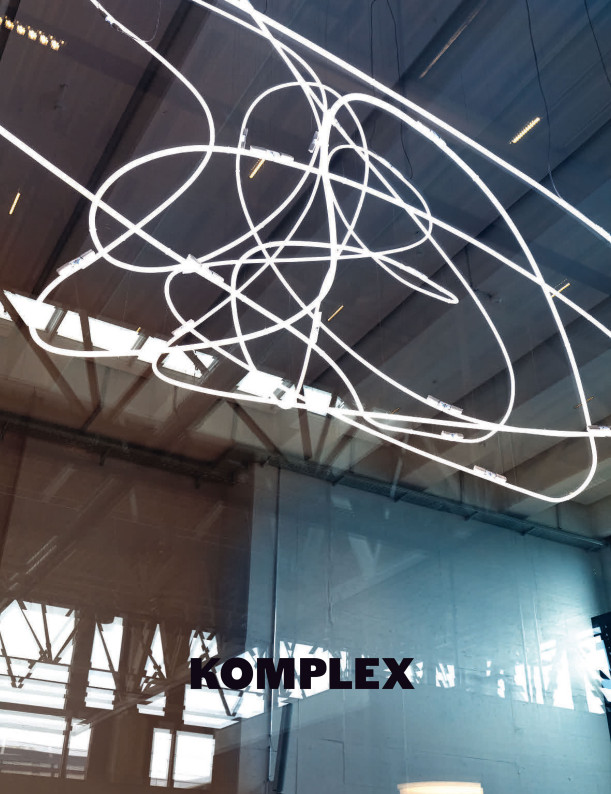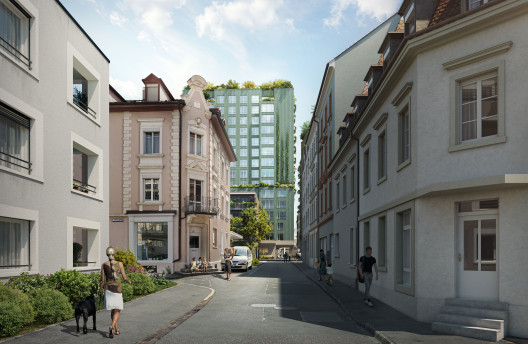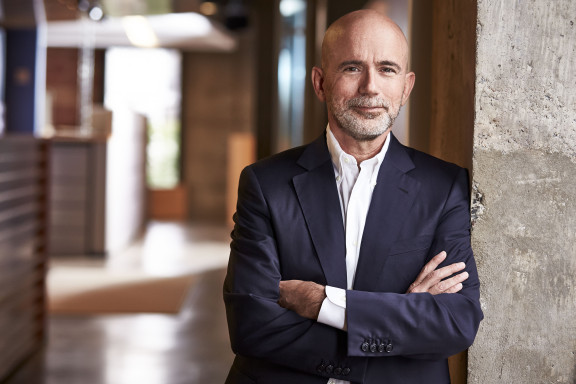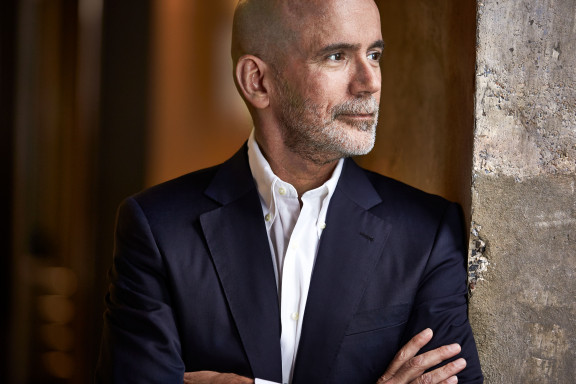«The earlier a design-build team is selected, the greater the value»
Rick del Monte is the managing director of the renowned American design and construction company Beck Group. The architect has over thirty years’ experience in the American construction business and works with a team of more than 180 architects and a construction volume of over a billion dollars. As chairman of the Design-Build Institute of America (DBIA), he advances the principles of integrated design and construction nationwide.
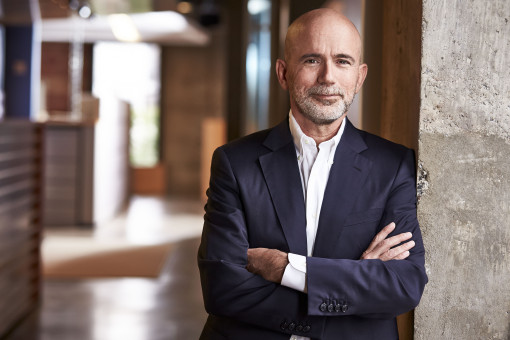
Representatives of Halter AG met Rick del Monte at the 2020 Design-Build Conference & Expo. This annual event was held online last October due to coronavirus restrictions in the US. It was here that the idea of conducting a Q & A with the board chairman was born. Because – particularly in the time of coronavirus – it is more urgent than ever for design und construction firms to talk about the changes needed to move our industry forward.
Komplex: How is the Beck Group organized?
Rick del Monte: In 1999 we merged our fifty- person architectural practice with Beck, a ninety-two-year-old construction firm. Our stated goal was to ≪revolutionize the industry and change our future≫. We felt we could only do this with a common bottom line between the two groups, aligning financial incentives for both with the overall success of the project. We thought that we might have a five-year head start before others followed down the same path. Twenty-one years later I can think of almost no other companies that have merged. To most architecture and construction firms, the cultural differences seem too large to overcome.
What range of services does the Beck Group offer its customers as a design-builder?
Beck delivers integrated design and construction services to our clients. We also operate independently as contractors and architects. We maintain engineering services in-house, but only to check and guide the work of outside engineers. We find it more efficient to team up with design-build subcontractors for mechanical, electrical, and plumbing work. Many of our clients start with our architectural services, then engage our pre-construction team for estimating, and eventually move on to an integrated process. Integrated firms are still very rare, and this progression gives clients a chance to develop trust with our organization before committing to the full integrated process. We also have a significant software development group: BeckTech. We started with DProfiler, which allowed users to develop conceptual estimates from block models. We have now added DESTINI Estimator, which allows the development of detailed estimates from Revit and other Building Information Modeling (BIM) programs. For the first fifteen years it was only for internal use. But for the last eight years we have sold it commercially – with increasing success. We are doing a great job of making our competitors better.
The design-build approach is defined by a shift in thinking, a change in the design process, and an early involvement of the trades. What are the biggest challenges for a designer when joining a designbuild team?
The first challenge for a designer lies in finding the right partner. Do they share your values, do they care about design, do they trust you with open access to the client? Becoming contractually tied to a contractor who does not share your values is going to result in a difficult project experience for all involved. The second challenge that most designers face is that, for the designbuild process to work effectively, the designer needs to work collaboratively with the construction team from the start. On the front end this requires more meetings, more conversations, and, often, more time. However, in the long run, designing a project that meets the budget, schedule, and technical requirements right from the start saves a tremendous amount of time in the later phases. The designer’s first project may be a challenge, but after working on a successful design-build project many designers do not want to go back to a standard process.
The first challenge for a designer lies in finding the right partner.
How can you ensure that your customers not only get the best price and the best value for money, but also sophisticated architecture?
If the owner wants sophisticated architecture and high design quality, they need to make sure that desire is incorporated into the very earliest request for proposals and becomes a significant part of the selection criteria. Making the importance of design clear sets the tone for the design-builders, and will impact how they approach the project and who they partner with. Within the design-build team, all members have to recognize the importance of design quality. The architect’s ability to meet directly with the client to make sure the design meets the client’s aspirations is critical. It also has to be an open partnership, because the architect cannot lose focus on the budget and schedule.
You collaborated with the renowned architect Renzo Piano on two major projects in Dallas. What were the conditions for these collaborations?
Ray Nasher, the founder of the Nasher Sculpture Center, had a thirty-five-year relationship with our construction group and had chosen us to build his project. We had just merged with the architecture group, so he also allowed us to be the local architect of record. The day after our firms merged I was sitting in a meeting with Ray Nasher and the partners from RPBW. I was the partner overseeing both the architecture and the construction of the project. It was an incredible experience: flying around the US and Europe visiting all the Piano Museums, spending time at the RPBW offices, and working with some truly brilliant people. Since I was in charge of both construction and architecture, I made sure all the team members sat in on every design presentation. I had more influence on the development of the building when it came to technical issues, organization of the drawing sets, and working with local regulations. Once Piano became convinced that my goal was to allow them to create the finest building possible as efficiently as possible, the relationship flourished. The partner in charge told me it was the best project she had worked on, which was a tremendous compliment because she had worked on some great projects. The Piano Pavilion at the Kimbell Museum was a very different process. Despite requests from Piano’s office, the construction manager (CM) on the project decided that the contractor and architect of record needed to be separate firms. That made it a more difficult process. We ended up putting our architects on the site to build the BIM and coordinate all the conflicts in the drawings. The building turned out well, but having three separate parties working on the project added a great deal of stress to the team. It cemented my belief that it is often the CM or owner’s representative who reduces collaboration between the design and construction teams in an effort to maintain complete control of the project.
You have argued that good architecture is not a contradiction to projects that are functional, technical, and economical – or to sustainable solutions. In your experience, is there a recipe for success?
I wish there was a recipe! Perhaps then it wouldn’t be such hard work to create good architecture. I think there needs to be a senior person in the organization who is driven to push for design excellence. Someone who sets the tone for the company. There are always reasons for why things cannot be done well. But I tell my staff in both construction and design that I’m not here to make their lives easy – rather, we are all here to create great buildings. I’m not always the most popular person in the company!
At the beginning of a project, the owner is confronted with its existing complexities, constraints, and dependencies. What is the value of involving the designbuild team early in the process?
The earlier a design-build team is selected, the greater the value. An owner has to make a multitude of decisions in order to launch a project, and these early decisions are the ones that have the greatest impact. The design-build team can provide facts about cost, schedule, zoning, regulatory agencies, etc. The more information the owner has, the better the decisions they can make. Owners need to appreciate that many times more money can be saved with better decisions up front than with savings gained through competitive bidding at the end of the document phase.
I would say that a lack of timely decision-making on the part of the owner is the most common cause of price and schedule overruns.
What factors could significantly affect the design-builder’s ability to complete the work at the contract price and within the contract time?
Being in the middle of a coronavirus pandemic, we know acts of God can certainly have a major impact on the budget and schedule. Project approvals from local municipalities seem to be getting less predictable, and have caused us delays on several projects. However, if I am perfectly honest, I would say that a lack of timely decision-making on the part of the owner is the most common cause of price and schedule overruns. As a designbuilder we have the obligation to help the owner make the right decision at the right time. We conduct team charrettes during the design phase to get input from all the stakeholders, we do pull planning to highlight critical decision dates, and we provide continuous pricing and scheduling information to inform their decision-making process. However, we sometimes run into internal conflicts in the client organization that can be very challenging to overcome. The owner needs to look at their staff and determine whether they are capable of efficiently running a design-build project. This is where a designbuilder has to understand human psychology and organizational politics in order to get a project completed in an efficient manner.
The design-build project delivery method requires a high level of trust between stakeholders and project members. How can you establish this trust?
Trust is one of the critical factors in the success of a design-build project. You can have the right strategy in place, the right structure, but if the team members don’t trust each other the process is going to fail. We start with a partnering session where the team commits to a series of project goals, usually followed by a social event. However, if the team is not held accountable for meeting these goals, they become empty words with no impact. Real trust develops when team members consistently meet their commitments and do what they say they are going to do.
How do design-build teams handle disagreements, conflicts, or ambiguities that need to be resolved? What role does ownership and leadership play in the successful execution of a project?
I think there needs to be someone who can make difficult decisions based on what is best for the project. We have developed a position called the integrated project leader (IPL). This person is the main client contact and is responsible for overseeing both design and construction. They need to balance the interests of both parties and make decisions for the good of the overall project. They report to the regional directors of architecture and construction. This is the most challenging position to develop people for. IPLs come from both architecture and constructions backgrounds, and to be successful they have to have a high degree of emotional intelligence. The owner is a critical piece in a designbuild project. They need to understand how it is different from a conventional process, and they need to be committed to making it a success. Without a committed owner, the process will not succeed.
Let’s go back to the practical side. You are currently rebuilding the campus of Tecnológico de Monterrey in Mexico City, which was devastated by an earthquake in 2017. Sustainable design and prefabrication are important aspects of this project. Tell us more.
We first began working with Tec on their new football stadium on the Monterrey campus. The design by the original architect was six months late and three times their budget. They asked Beck if we could design and build a stadium to meet their budget and schedule, and we said yes. The final product turned out to be a great success and won multiple design awards. During this time, their student campus in Mexico City was hit by an earthquake. Five students were killed and several buildings were damaged. The buildings on this campus did not meet the needs of their new progressive teaching strategy, so they decided to tear down all but two of the buildings and start over. They required a very aggressive schedule in order to not lose students and asked us to design and build the new campus. This turned out to be a wonder ful opportunity to rethink an entire campus for ten thousand students. The classroom buildings are large loft spaces, flexible and easily reconfigurable. Part of the flexibility is that we have no mechanical heating or cooling: it’s all naturally ventilated, so there’s no need to move ducts and diffusers when changing the space. This was possible because the climate in Mexico City is temperate with a low humidity. We worked with Arup to study prevailing wind patterns, facade ventilation, air movement through the atrium, and much more. Students will start classes in the fall and we are excited to see this system in action.
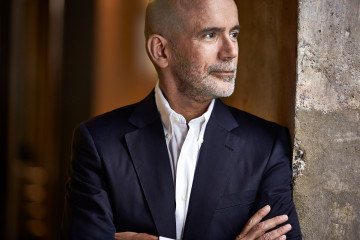
You are on the board of the Design- Build Institute of America and recently acted as its chairman. What does the organization stand for?
The DBIA was founded to champion the designbuild process. It defines, teaches, and promotes best practices in design-build project delivery in order to help owners and project teams. It was formed by a group of individuals who pioneered the design-build process around the country and wanted to create an association that would support their efforts. When the DBIA was founded twenty - five years ago, design-build was only legal in a few states. Now there are only two states left where it is not legal. They wanted a unique association that would not represent any one individual group within the industry, but would instead represent a collaborative process. The DBIA developed a process that we call Design-Build Done Right. It was developed to balance the needs of owners, contractors, and designers. We have created training courses and certification criteria around this process, and it has become widely accepted as the standard in the industry. Clearly, we have had a lot of success! The last independent study, which came out in 2019, showed that 44% of all construction volume in the US would use the design-build process by 2020 – pretty amazing growth for a twenty-five-year-old organization!
What services does the DBIA offer its members?
The DBIA offers training and certification in the design-build process. Many owners will send their entire team to get certified before starting their first design-build project. The City of New York sent over 110 people to get certified when they started switching their delivery method to designbuild. If you have spent your career working in a conventional and often confrontational process, you need training to understand how to work in a collaborative process.
What is Design-Build Done Right?
It’s a methodology that the DBIA developed in response to poorly executed design-build projects, which had become common in the industry. These projects were creating a negative impression of design-build, and the DBIA felt it needed to better define the design-build process. It includes some basic principles to make sure that all team members are treated fairly and that the owner gets the best project possible. The basic idea is to set the price and compete on the amount of value the team can achieve within that budget, rather than withholding the budget and creating the incentive to minimize cost at the expense of quality. It encourages creative solutions to an owner’s program, and involves creative input from subcontractors and suppliers.
DBIA talks about two different variations of design-build: best value and progressive. Could you talk about the differences and how an owner would choose between the two?
Best value is the original and best-known design-build process. It is the most commonly used process for federal projects and other public buildings. In this process, the owner develops a very detailed program outlining the requirements for the new building. They select three teams to enter a competition based on qualifications, whereupon the teams each develop a design to meet the detailed program and provide a guaranteed price. The teams start with the budget and the winner is selected on the basis of who provides the best value for that budget. Progressive design-build is much like a traditional process. Based on qualifications and fees, an owner selects a team to develop the design and conceptual pricing for the project. When the project is well-defined, but before the documents are complete, the team provides a guaranteed price. The owner can accept that price, or take an ≪off-ramp≫ that allows them to maintain ownership of the drawings and seek another construction price. More than 90 % of projects at Beck are done this way.
Who should use which process?
Best value is for an owner who is experienced, has the time to develop a detailed program, and needs a guaranteed fixed price before selecting a team. This typically describes governmental agencies. Progressive is for clients who want to define the program with the team and want to participate in the development of the design. They need to be willing to progress the design before receiving a guaranteed price. This process is more typical for the private owners that we work with. Both options can be very successful, and the decision should be based on the specific needs of the owner. The DBIA has documents on its website elaborating on each to help owners decide which process would best serve their needs.
You are a noted speaker and writer on the value of integration and on the changes taking place in the design industry. What are your thoughts on what to expect in the future?
The recent McKinsey article about the design and construction industry highlighted the inefficiencies and lack of productivity in the sector. This has attracted venture capital firms who see an opportunity for profit. Katerra is an example of a VC-funded firm trying to capitalize on reducing these inefficiencies. However, they have struggled to achieve the levels of efficiency and cost-saving they had hoped for. It is a huge challenge. We will continue to see an increased use of technology, more collaborative processes, and a focus on prefabrication. These will provide nice incremental gains, but not dramatic change. This is a fragmented industry with low profit levels, and it will take large investments to effect a real transformation. I think it is going to take a company like Google or Amazon to make the kind of investment in technology and prefabrication needed to truly transform our industry. I am afraid that the real transformation in our industry will not come from within.
We will continue to see an increased use of technology, more collaborative processes, and a focus on prefabrication.
In the past, the construction industry was not very open to minorities, especially in design. How do you intend to change that and what does the Beck Group’s Inclusion and Diversity Initiative stand for?
Beck is a pretty unique organization in that our CEO is Black. He was made CEO nine years ago at the age of thirty-eight. He is trained as an architect and is someone I hired out of school and helped to mentor and develop. We continue to look for minority candidates and have expanded our recruiting to a broader group of universities. We also need to increase the number of women in our senior staff. However, this does not worry me, as more than 50 % of the students in architecture schools today are women and our hiring reflects that. The situation is more challenging among construction management graduates, but it is improving. Our real challenge is in finding Black graduates in either field. There are not enough graduates to help us become as diverse as we would like to be. So we have been working with regional high schools to encourage more Black students to enter the design and construction fields.
As a young man, you initially began your training in engineering and later switched to architecture. Which part of the design process are you most passionate about?
I wanted to design cars when I was younger. I thought engineers designed cars, so I went to study engineering. After two years of calculus and physics I decided that this wasn’t what I was looking for. I ended up in architecture because a friend told me I could keep all my math and science credits, and I would get to draw. I loved being an architect from the first day. I enjoy both the initial form-giving and working through the details to make sure that the execution supports and enriches the original concept.
Away from work, you can be found on the racing track. You’re a driving instructor and a big Formula 1 fan. Is driving a balance to your professional life?
This can be a very intense profession, so driving on the track is a way of getting away from the stress. There is a level of fear involved in driving a powerful car at its limit, otherwise it would feel like a video game. That fear has a wonderful way of focusing your mind. Work does not cross my mind when I am on the track.
Halter AG is the initiator behind a professional think-and-do tank called The Branch. It wants to help establish the design-build delivery method in Switzerland. Do you see any potential for collaboration?
The mission of the DBIA is to promote best practices in design-build and to help advance the industry. I know The Branch is a young organization, and we would love to help make it a success. From what I have seen, Halter is certainly an interesting organization and there is much we could learn from each other.

